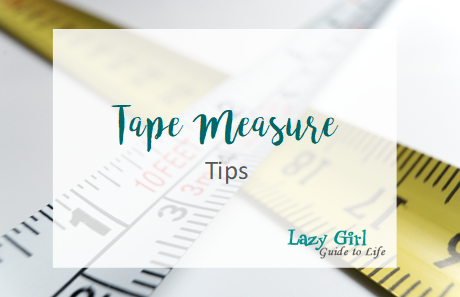A tape measure is a tool everyone should have in their toolbox.
Not long after my husband and I got married, we went shopping for a new dresser to complete our bedroom suit. After months of searching, we finally found a beautiful piece of furniture that both of us liked. Yet when we brought it home, we discovered it was HUGE! It didn’t quite fit the space we had for it, extending into the path of the bedroom door so that every time we opened the door, it banged into the corner of the dresser. Things always look smaller in the store!
Don’t make the same mistake we did, use a tape measure. Just because I know my ring finger is roughly 3 inches long doesn’t mean I should use it to try to measure things!
Tape Measure Lengths
Tape measures come in numerous lengths, and various quality levels. I carry a short 6’ tape measure in my purse (Don’t judge me! You never know when tools come in handy. I also carry a small screwdriver set.) There are cheap ones perfect for most users and rugged, heavy-duty tape measures for arduous users. I’ve seen tape measures as short as 2 feet and some over 100 feet long, however a 25-foot tape measure is a good all-purpose length for most household uses. That length is long enough to measure the length or width of most rooms to help calculate square footage for flooring or estimating the quantity of paint needed.
Tips on How to Use a Tape Measure
Tape measures have markings on the top side that indicate inches, as well as smaller numbers on the bottom reflecting centimeters. The inch marks on the top are in 1/16th-inch increments, also denoting 1/8, 1/4, 1/2 and 1-inch increments.
A small black diamond (sometimes triangles) indicates 19.2 inches for truss layouts. Wait, what? Don’t worry – if you don’t know what that means, then you won’t need to use that feature!
Another common feature includes special markings every 16 inches, which is the typical distance between wall studs – helpful to know when you want to hang heavy artwork or shelving. A better way to find the studs in your walls would be to use a stud finder.
There’s an old saying, “measure twice, cut once.” It’s a great idea to double-check your measurements before you cut into, and potential ruin, your material.
For information on what other tools to put in your toolbox, be sure to check out our tool list.
Like this article? The Lazy-Girl Guide to Life also has tips on how to run your household, manage your money and feed your family.

